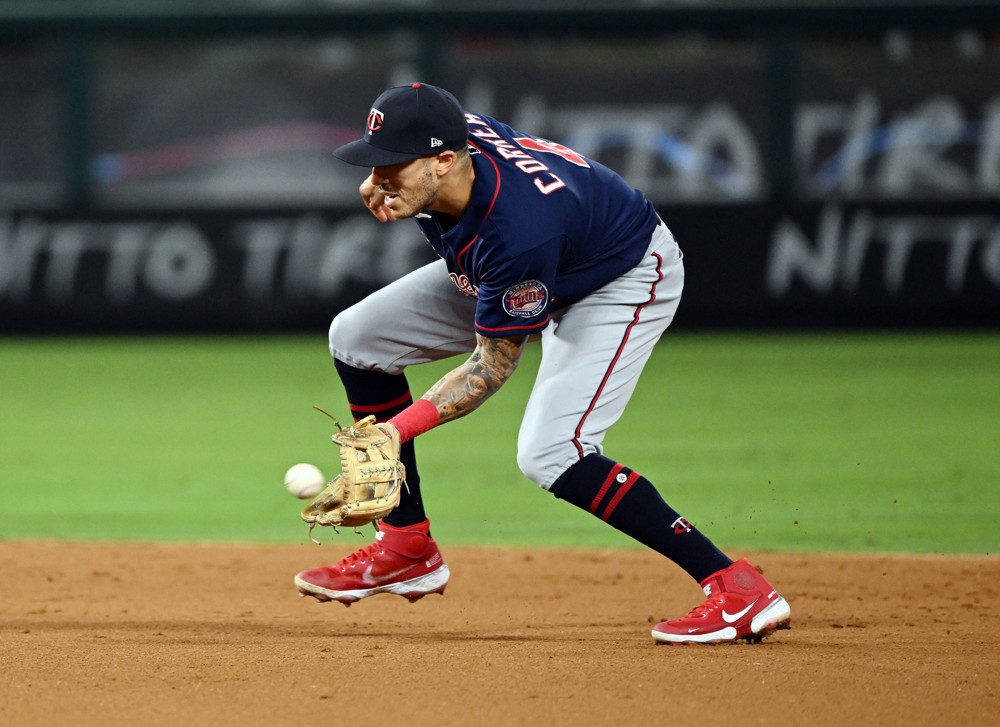This excerpt from The 2021 Bill James Handbook was written just after the 2020 regular season concluded (and thus does not include any reference to Betts’ scoring the World Series-clinching run).
The Bill James Handbook is available now from ACTASports.com
By Mark Simon
In 1983, when I was eight years old, I was given my first Bill James Baseball Abstract (I pronounced it “Abscart”). I had moved to the point of advanced understanding of the game, enough to learn a few important things from my father: Willie Mays is the greatest player of all-time. Keith Hernandez is an incredible first baseman. And the most fun thing to watch in baseball is when Mookie Wilson tries to score from second on a single (or sometimes on a ground out).
The numbers back up that Wilson was a very good baserunner. Thirty seven years later they’ll tell you that Mookie Betts is just as good, if not better.
Betts was the leader in Baserunning Net Gain in 2020. He tallied +22 bases for the Dodgers from his baserunning. This was the first time in his career that Betts led the majors in this stat. He previously finished tied-sixth in 2015, third in 2016 and 2018, and second in 2017.
Betts stole 10 bases in 12 attempts, but it wasn’t stolen bases where Betts made his mark. Betts rated an MLB-best +16 in Baserunning Gain, which measures how often a player takes extra bases on hits (such as going second to home on a single), how often he advances on wild pitches and passed balls, and how he fares at avoiding being thrown out or doubled off, or hitting into a double play.
This marked the second time he had the best Baserunning Gain numbers (as opposed to Net Gain), the other instance being in 2017.
In 2020, Betts went first to third on seven singles in 13 opportunities (the average runner advances to third 28% of the time), scored from second on a single seven times in eight opportunities (the average success rate is 59%), recorded 12 bases taken, made no baserunning outs, and hit into two double plays in 39 opportunities (his rate was about half the MLB double play rate of 10%).
That’s a level of success that Mookie Wilson could appreciate.
Largest Baserunning Net Gain – 2020 Season
| Player | Net Gain |
| Mookie Betts | +22 |
| Trevor Story | +20 |
| Kyle Tucker | +17 |
| Brandon Lowe | +17 |
| 4 players tied | +16 |
| *Xander Bogaerts, Adalberto Mondesi, Robbie Grossman, Starling Marte |
The runner up to Betts for the Net Baserunning crown was Rockies shortstop Trevor Story.
Story, primarily known outside of Colorado for his hitting and his defense, led the National League with 15 stolen bases after previous seasons of 27 and 23. He finished with a Net Gain of +20 bases.
Story’s Rockies led the majors in Net Gain, finishing with a +67. The Diamondbacks (+59), Rays (+43), Athletics (+43), and Rangers (+36) rounded out the top five.
Colorado separated itself from other teams in how well it did at taking extra bases on hits. For example, the Rockies scored 42 times in the 55 instances a runner was on second base when a single was hit. Their 76% success rate led the majors.
The Rockies ranked second in Baserunning Gain (+43) and third in Stolen Base Gain (+24) en route to being first overall. The rest of the Dodgers didn’t take after Betts. His team ranked 17th overall (+6).
Net Gain is a statistic that measures baserunning production that includes all baserunning advancements on both hits and outs (BR Gain) and stolen bases (SB Gain). It estimates the number of bases a player gained or lost for a team due to his baserunning. BR Gain is the sum of extra baserunning advances a player made over the league average, minus a penalty for the number of baserunning outs he made above the league average. SB Gain estimates how many bases each runner gained or lost his team based on his successful and unsuccessful stolen base attempts.
The following pages show baserunning performance for players listed in alphabetical order for both 2020 and for the careers of those who qualify. It also includes baserunning numbers for 2020 for each team, ordered by Net Gain.


